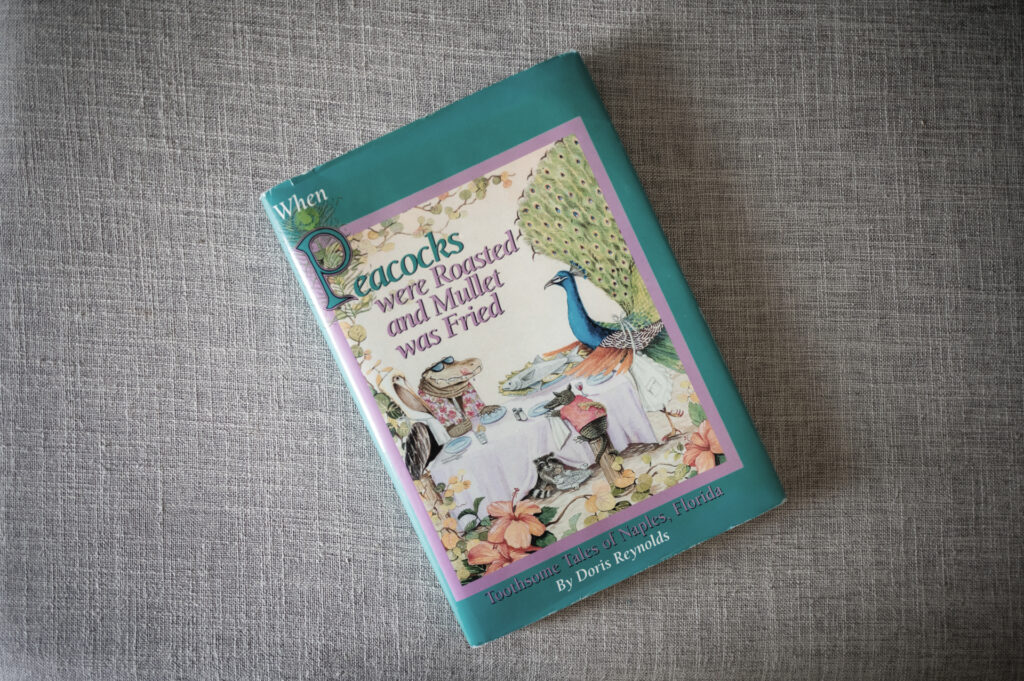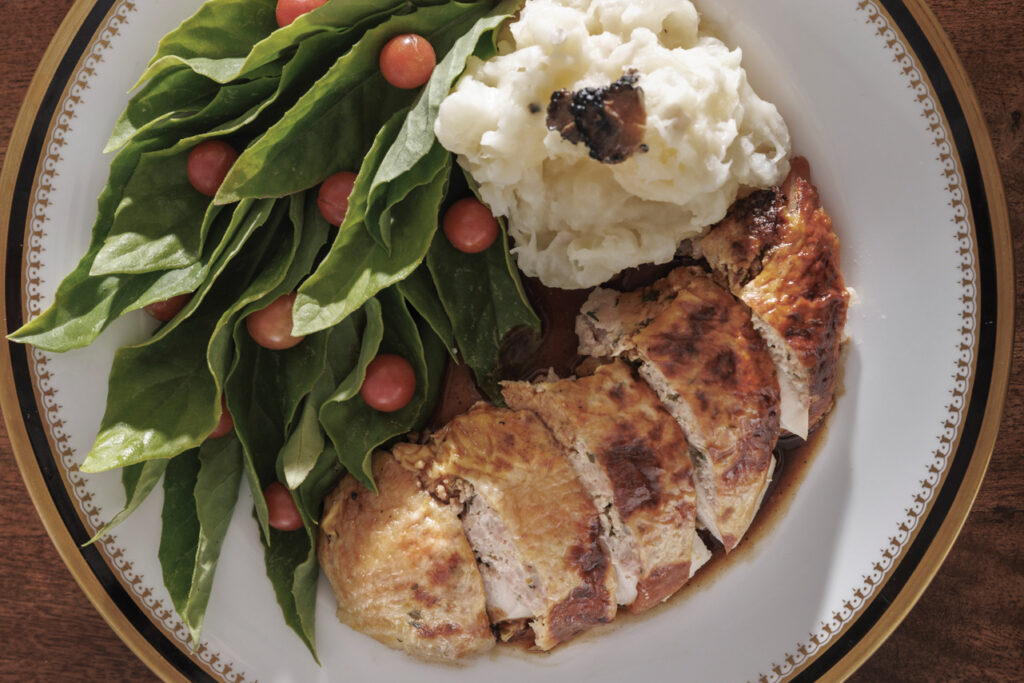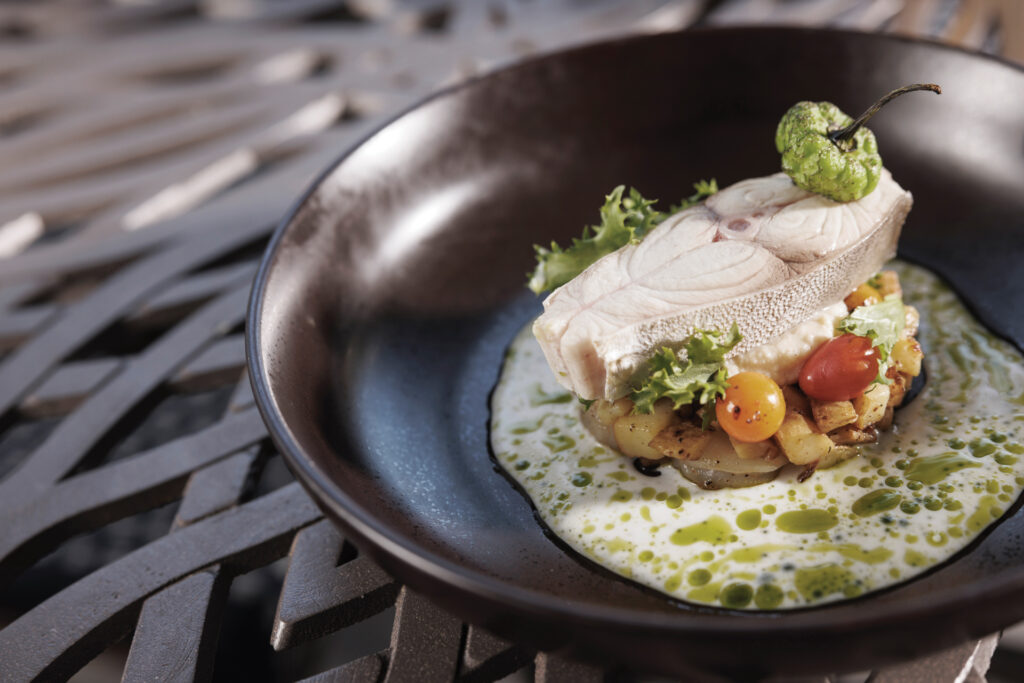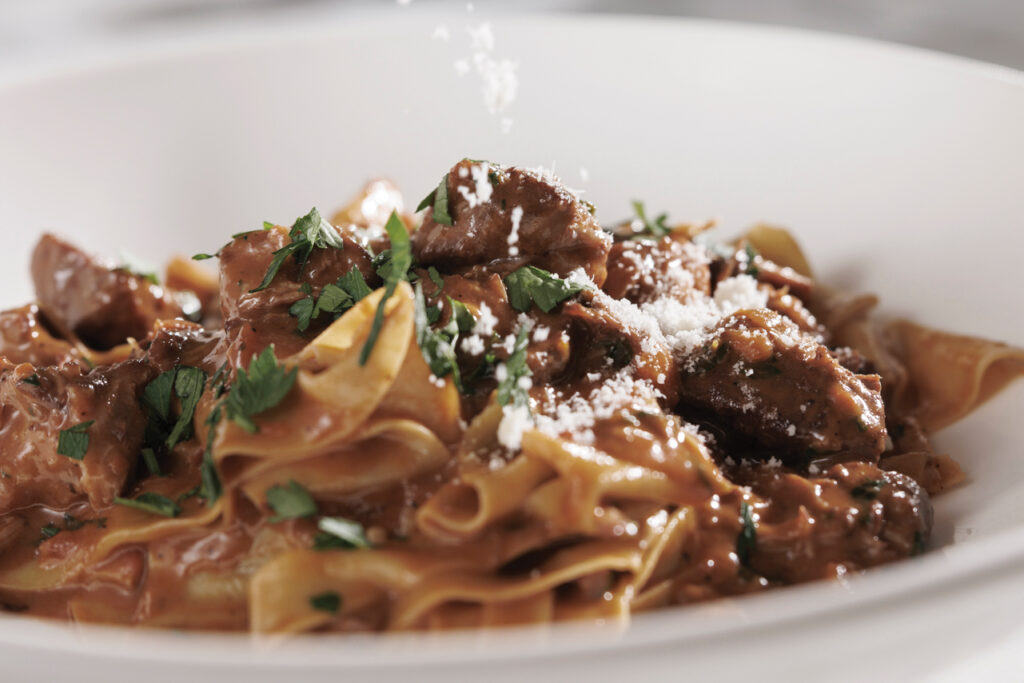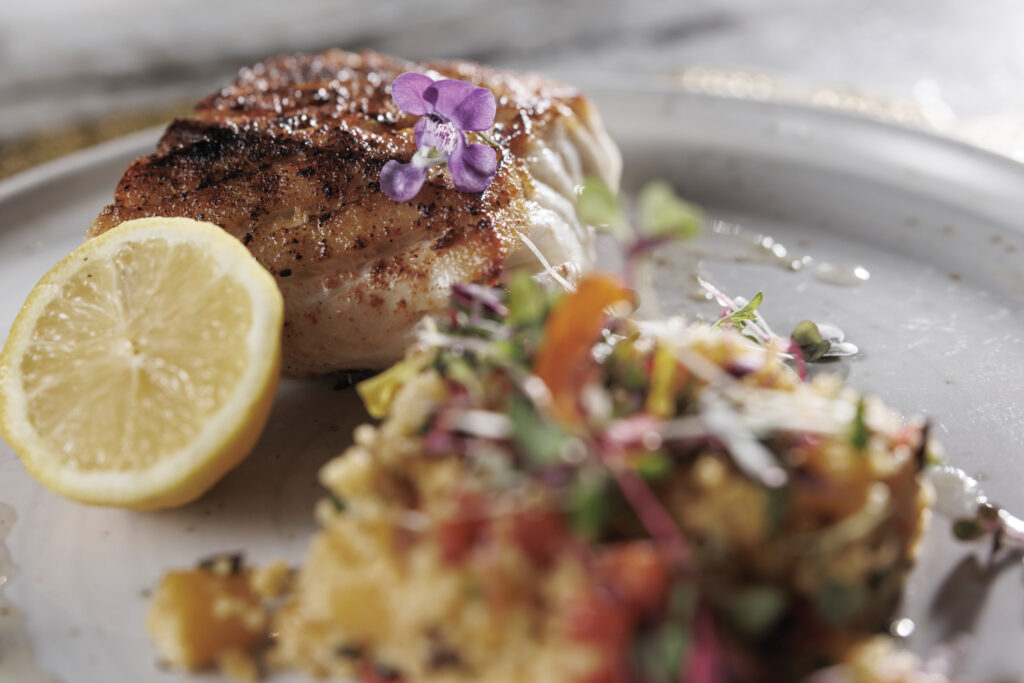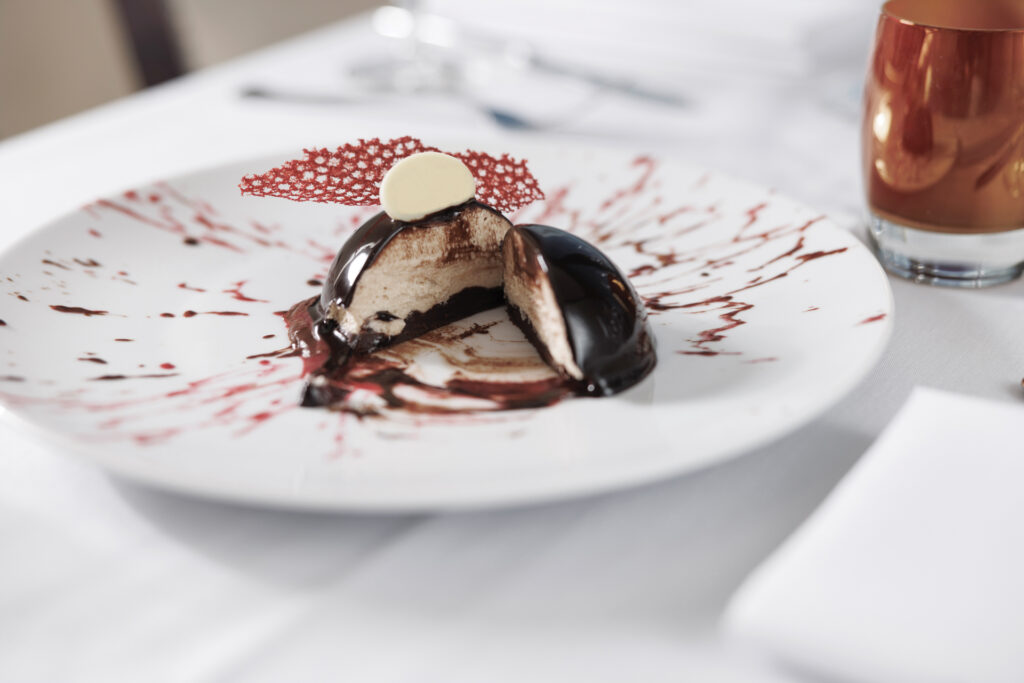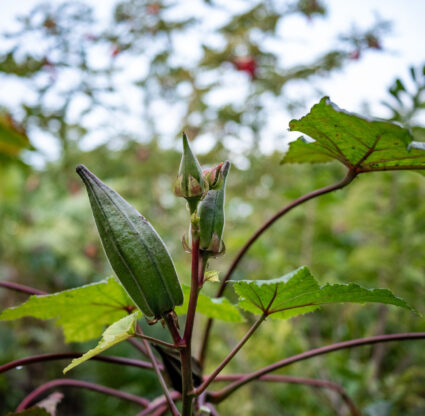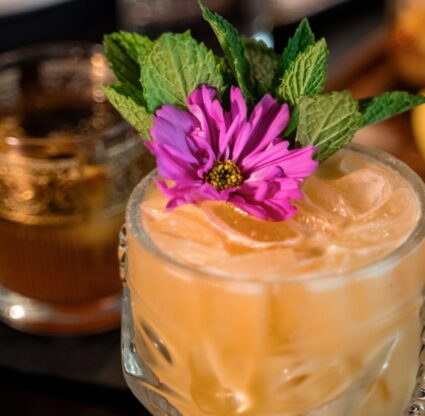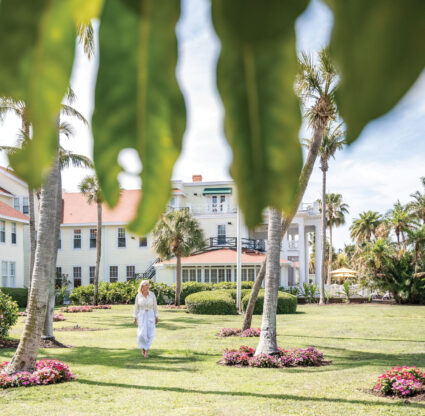Food is a powerful vessel for memories. And for food columnist and Naples’ first official historian, Doris Reynolds, the city’s past was embossed in her mind as the smell of dishes wafting from her first Thanksgiving in town at the old Gulf Hotel in 1952; dinners at Kelly’s Fish House, Naples’ oldest restaurant; and the impromptu parties with bountiful spreads in her eclectic 13th Avenue South home. Knowing a city’s soul is anchored in its past, and with Naples rapidly growing, in 1993, Doris compiled decades of local food lore into When Peacocks were Roasted and Mullet was Fried. The book tells the story of Collier through early meals at The Rod & Gun Club, lavish parties at the Naples Hotel and legendary Old Naples hosts. In honor of the city and county’s centennials, we ask five forward-thinking chefs to reinterpret dishes from Doris’ book.
Junkie Fleischmann’s Roasted Peacock
When presented with this assignment, chef Don Splain says, “I hope I get the peacock.” It makes sense: Don, a towering culinary presence in Naples for 20 years, is as much an anthropologist as he is a chef. He dives deep into the cultural connections of food and forages for wild mangoes, wild persimmon and any other matter of endemic edibles in our region to fold into his highly imaginative catering kitchen.
Don’s reimagined peacock recipe comes by way of Julius “Junkie” Fleischmann, the man behind Neapolitan Enterprises, which created much of the Third Street South we see today. Junkie also took over botanist Henry Nehrling’s abandoned gardens and turned them into what is now Naples Zoo at Caribbean Gardens, adding showy animals for entertainment. Doris writes of a time when flamingos, swans and peacocks would escape and wander the neighborhood. On the rare occasion when a peacock met an untimely end at the jaws of a gator, Junkie would cook them up. Ancient royal feasts served the birds with their legs wrapped in gold sheets. “So why not at a dinner party hosted by Naples’ ‘Renaissance Man,’” Doris posits.
Peacocks now roam wild in Collier County, and Don puts the bird in the same boat as wild turkey. But as it turns out, they’re difficult to source and exorbitantly priced, so in recreating the recipe, he swaps for pheasant—a suitable substitute in Junkie’s recipe. The erudite Don follows Junkie’s example and starts by rubbing the bird inside and out with salt to dry out excess moisture, then threads it with homemade ibérico pork belly bacon and seasons it with Florida sage and thyme.
As the recipe calls, Don stuffs the double-breasted pheasant cavity with onion, rosemary, sage and bitter oranges. After trussing it, he coats the outside in clarified butter before roasting. Since pheasant is a lean bird, the internal basting process draws all the flavors of the fat and aromatics from the inside out. Most of the ingredients, Don notes, could be found within 5 miles of where he cooked the dish. “I love visiting those old techniques,” he says of the no-fuss dining era, where chefs let ingredients shine simply. “It’s a lost art.”
Chef Schultz’s Filet of Pompano, Naples Style
When Doris described Naples as a “fishing village” in a 1952 New York Times article, early settler Florence Haldeman Price called the writer over and pointedly clarified that Naples had always been, and continued to be, a resort community. Central to that identity was the Naples Hotel, which Florence’s grandfather and a group of Kentuckians opened in 1889. Doris recounts that the first registered guest was the “rambunctious” Rose Cleveland, who “couldn’t have cared less about the highfalutin’ ways of Palm Beach and Miami,” setting a standard for the type of people who convened in Naples.
In 1947, William Schultz, who had worked for Barron Collier in his Useppa Island Inn, joined the Naples Hotel and established Sunday night buffet feasts as a town tradition. Doris chronicled William’s pompano filet—‘Naples style’—which uses the migratory, nearshore fish favored for its sweet flavor and succulent, pearly white meat. Local ingredients were essential in an era with no refrigeration and ice boated in via Naples Pier. William simmered the fish and roasted it with shallots, mushrooms and celery before making a sauce out of fish broth, lobster, shrimp and sherry—finishing with a Hollandaise.
Jason Goddard, head chef of Aielli Group’s genre-defining restaurants—Barbatella, Dorona, Grappino, Sea Salt—was delighted to see William’s pompano filet. As a 20-year Naples resident, Jason has caught the fish several times. He took his assignment seriously, strolling with his daughters to Crayton Cove for inspiration and reading up on Naples history so he might better pay homage. As he examines the recipe, an image appears in Jason’s mind: a chef in Naples—when, Doris writes, there were so many fish “you could catch them in your shirt”—goes fishing for dinner at Crayton Cove. He picks greens on his way home to round out the meal.
Jason detects Southern and Creole influences in the dish, so he swaps the original sauce for blue crab sofrito (blue crabbing dates back more than a century in Collier County), using the shells to make the braising broth. Alongside a shrimp potato hash, he blisters Everglades tomatoes and tosses dandelions in olive oil and vinegar for a fresh bite.
The experience felt familiar and nostalgic to Jason, who grew up picking dandelion greens on his family’s Iowa farm. To recreate a past recipe, the chef says, is to return to a moment in time: “[It’s about] polishing it and making it refreshed and new and reliving it.”
Bertha Lowdermilk’s Wild Boar
The vivacious Bertha Lowdermilk was a consummate host rarely seen without hibiscus in her hair. Her husband, Fred, was the first city manager, serving from 1949 to 1961. His ingenuity included unleashing alligators to chomp through overgrowth in the city sewers and ordering a shipment of dragonflies to chow down on a particularly nasty mosquito blight.
Fred was recruited from the Edison and Ford Winter Estates in Fort Myers to oversee The Naples Plan, a fund for city improvements early leaders ingeniously set up in 1948 to function like a nonprofit. “Almost immediately, $380,000 was raised for public works,” Doris writes. And Naples’ strong identity around philanthropy was established. Fred oversaw many of the ensuing civic improvements, including the creation of a nursery at Cambier Park (on land donated by Henry B. Watkins Sr.). Every spring, Fred gifted a flowering tree to each Naples family in his ongoing efforts to beautify the city. (Fred’s also largely credited for the stately mahoganies and banyans along Gordon Drive.) Doris put it this way: “If you’ve ever admired the gorgeous, flamboyant Royal Poincianas or the spectacular Shower of Gold trees along our streets and avenues, say thank you to Fred Lowdermilk.”
Fred was an avid hunter, and Bertha was a superb cook. She prepared game with finesse, and wild boar was her favorite. When Vincenzo Betulia of The French and Tulia saw Bertha Lowdermilk’s Wild Boar, he latched on. He could imagine the pigs snuffling through our cypress forests and freshwater marshes, just like he could see them trotting through the rolling, olive tree-filled hills of Umbria in his native Italy. “As a chef, I see things … as if I were living it,” he says.
Vincenzo’s recreation pulls a Renaissance-era recipe from central Italy, drawing from one history to interpret another. He sears the boar shoulder, using the caramelized bits as a flavorful base for his rich sauce. Then, he braises the meat in red wine for up to three hours, until fork-tender, and adds bitter dark chocolate to tamp down the boar’s inherent gaminess. He serves the meat with wide tagliatelle.
Vincenzo is fascinated by the fact that the animal was found and cooked prominently in these two places on opposite sides of the world. “It’s so historic in that sense,” he says. “For me, it’s almost a little bit more soulful.”
Snook a la Snooky
Claus ‘Snooky’ Senghaas arrived in 1923 from Baden-Baden, Germany, to be the chef at The Rod & Gun Club. While staying at a hotel in Baden-Baden, Barron Collier fell for Snooky’s culinary prowess and offered him a job to cook in the advertising magnate’s fledgling city. Snooky consented; the rest was actual history: He became beloved for his cooking and larger-than-life personality. (Old photos show him dancing at the local prom.)
As the building of Tamiami Trail ballooned the town’s population, Doris notes that the task of feeding everyone fell largely on Snooky, who would tend to the well-heeled crowd at The Rod & Gun Club and Everglades Inn and travel to nearby worker camps to cook. During World War II, when the Coast Guard set up at The Rod & Gun Club, Snooky would prepare “his special fish and game dishes for the military brass.”
Today’s larger-than-life German transplant chef Andy Hyde is an apt fit to recreate one of Snooky’s iconic dishes. Born in Ghana and raised in Hanover, Germany, Andy runs one of the most inspired kitchens in town at Hyde N Chic restaurant. Andy’s exuberance only heightens dinner at Hyde N Chic—the chef often winds through the intimate dining room with flawless wine recommendations, animated food stories and his trademark laugh.
Regarding the recipe for Snook a la Snooky (which was baked, then served with a thick mushroom sauce), Andy says the original was good for the time, but: “There was no herbaceous love. There was no aroma in there. It was just a quick toss and go, which I’m sure was yummy, but you needed a lot of salt.” His take, Grouper a la Chic, sous vides the fish to lock in flavor and finishes it with a hit of Ethiopian berbere spice to give it that blackened-not-burnt touch. Andy tried to get snook, but it’s harder to source than you’d think. The fish is fairly plentiful around the passes in the spring, but because they’re overfished, you can only catch them for personal consumption. No matter: Doris chronicled Snooky’s recipe as using grouper as a substitute, and Andy approves of it as a true, local fish. The chef plates the grouper alongside his Moroccan couscous, one of the recipes he first tasted in Hanover. For a Southwest Floridian spin, Andy tosses the couscous with locally sourced peppers and eggplants.
Anne Wynn’s Peanut Butter Cream Pie
Wynn’s Family Market still uses many of matriarch Anne Wynn’s recipes. Until she had her third child, Jerry, Anne worked at the store her husband’s parents founded in 1938 as an inn and grocery. Doris writes that when Don Wynn came to visit his parents after the war in 1942, he had no intention of returning. On his first visit to town years prior, he said he’d thought Naples “was a terrible-looking place, just a couple of dirt roads, a few buildings, and thousands and thousands of mosquitoes.” But the city soon cast her spell as she’s done for many Naples residents. After he met and married Anne Merle Echols—who grew up in Everglades City in the laundry that is now the Museum of the Everglades—he never thought about leaving again, the author writes. A few years later, the family opened Naples’ first modern grocery store in 1948. (They also started Sunshine Ace Hardware.)
Anne’s Peanut Butter Cream Pie is a straightforward affair of fluffy peanut butter topped with thick dollops of meringue. Longtime local chef Todd Johnson—who worked at Tony Ridgway’s The Chef’s Garden and recently opened the lauded Nosh on Naples Bay—recreates Anne’s recipe with a hearty dose of chocolate. “I think chocolate should always be with peanut butter,” he says. His peanut butter-chocolate bomb whips the nut butter with whipped cream and cream cheese, poured over a layer of chocolate ganache, all encompassed in a glossy, chocolate sphere. The whole thing appears to detonate—in a controlled fashion—over a syrupy raspberry coulis.
Todd’s been in Naples since 1979 and remembers serving Doris at The Chef’s Garden in 1993, when she ordered his Floribbean daily special, with green papaya-and-jícama slaw and cocoa butter-seared Bahamian conch medallions. She asked to meet the chef, and though she was complimentary, Doris noted she couldn’t pick out the jícama. Todd realized he had forgotten the crunchy root.
The chef remembers Doris fondly as a woman who chronicled and shaped how we dine here today. “I think this town needs Doris Reynolds now more than ever,” he says. “She was the food critic for Naples back then. She did it in a style that had a tremendous amount of respect.”

